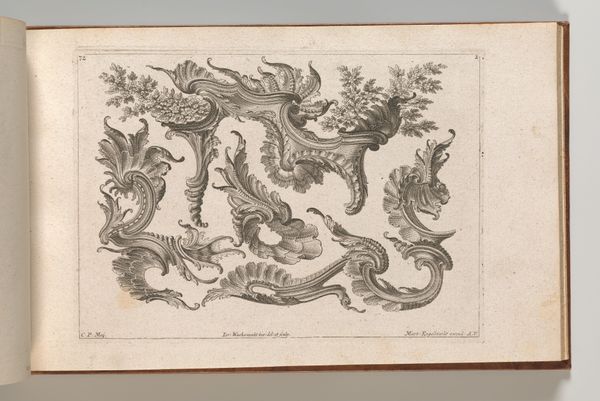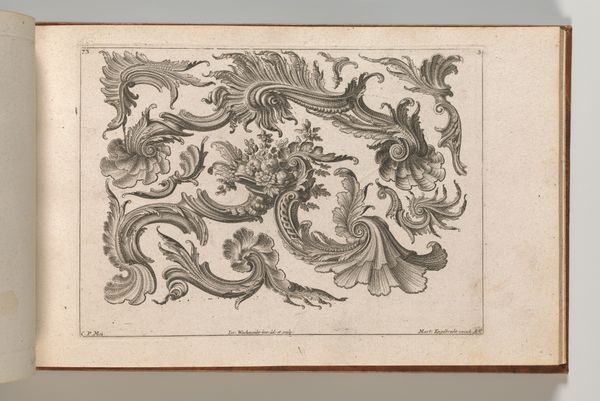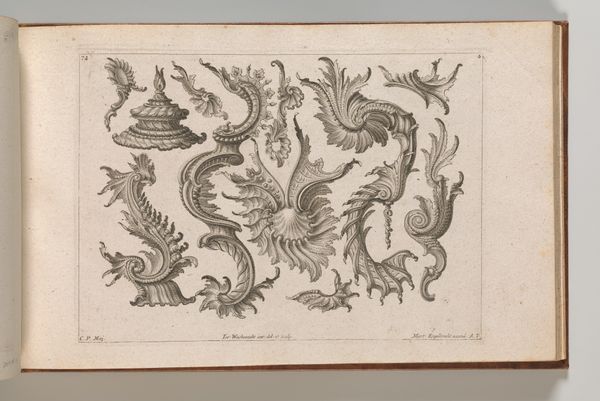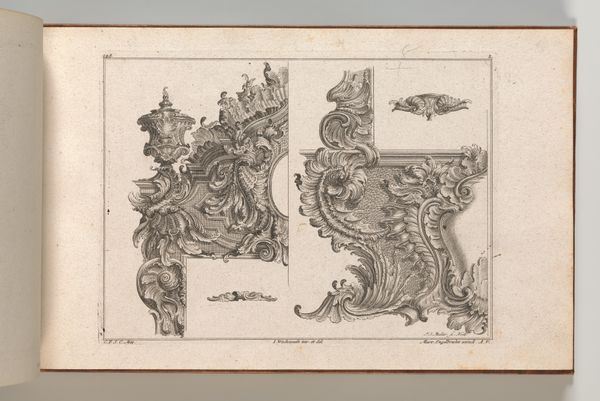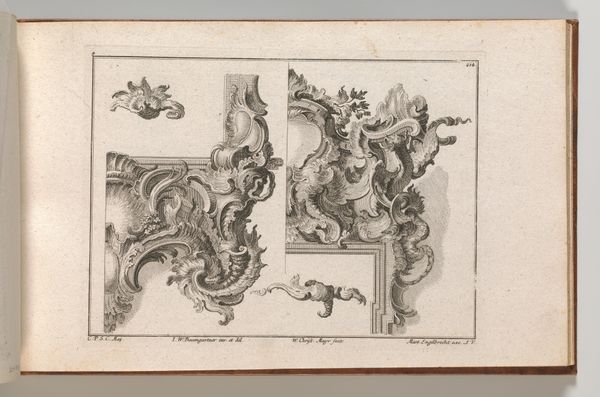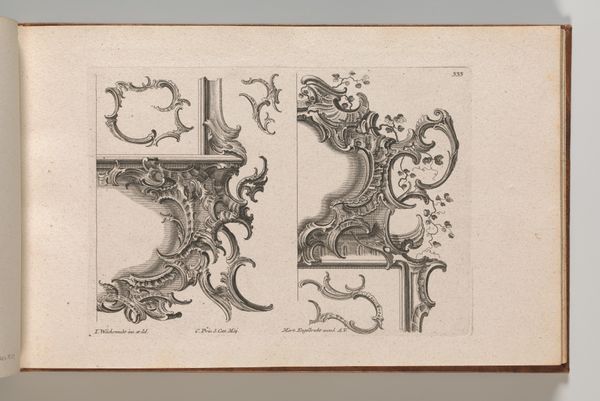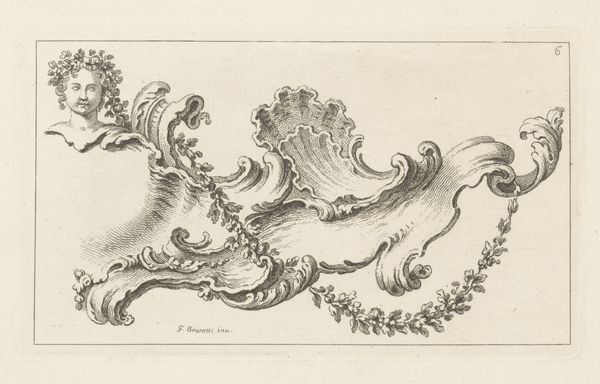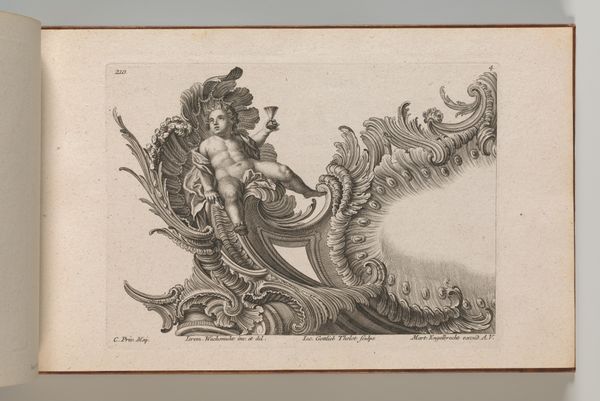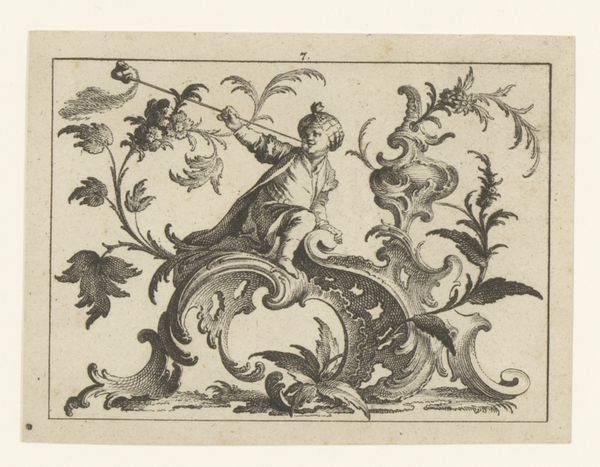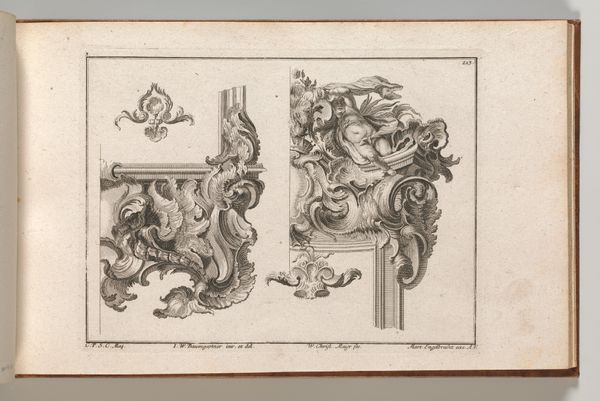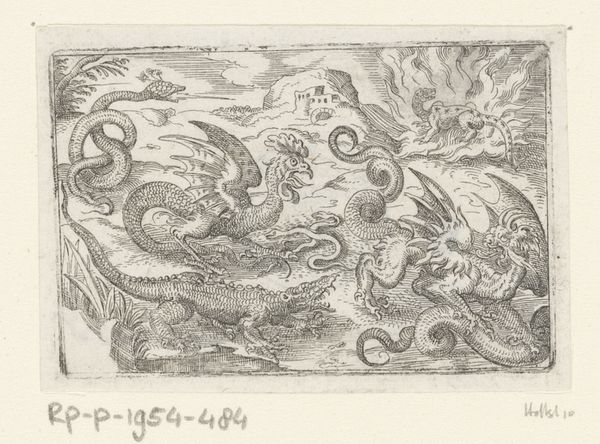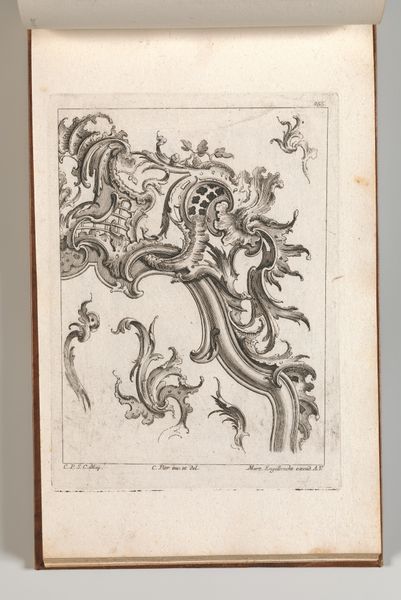
Design for a Rocaille Cartouche with the Figure of a Putto, Plate 3 from an untitled series with architectural cartouches and allegorical figures 1745 - 1755
0:00
0:00
drawing, print, intaglio, engraving
#
drawing
#
allegory
# print
#
intaglio
#
figuration
#
engraving
#
rococo
Dimensions: Overall: 8 7/16 × 13 3/4 in. (21.5 × 35 cm)
Copyright: Public Domain
Editor: We're looking at "Design for a Rocaille Cartouche with the Figure of a Putto," a print made by Jacob Gottlieb Thelot in the mid-18th century. It's incredibly ornate! I’m struck by the dynamism of the composition; everything seems to be swirling and reaching upwards. How do you interpret the design's overall effect? Curator: The work showcases a mastery of line. Consider how Thelot uses intricate, curving lines to create a sense of movement and exuberance. This effect, a signature element of the Rococo, stems directly from the manipulation of line, space and form within the cartouche itself. The weight and mass are illusory, aren’t they? Editor: Yes, even though it depicts potentially heavy architectural elements, it feels light. What’s the function of this contrast? Curator: The Rococo aimed to create works which were elaborate and complex, yet also graceful. Observe the balance—how the putto on the right corresponds to the implied weight of the cartouche on the left. It allows the viewer’s eye to flow effortlessly across the design. What do you make of the cartouche itself? Editor: It’s so asymmetrical! Not at all what I expect from architectural design. Curator: Precisely! Rococo challenged the classical ideals of symmetry. What might that asymmetry represent, conceptually? Editor: Perhaps a move away from rigid rules towards something more playful and imaginative? Curator: An astute observation. Ultimately, it is through understanding the interplay of form and technique that we grasp the Rococo’s distinct departure from previous aesthetics. Editor: So, focusing on the lines, forms, and composition helps us understand its historical context, too. Fascinating! Curator: Indeed. Close visual analysis enables us to decode how it signifies meaning.
Comments
No comments
Be the first to comment and join the conversation on the ultimate creative platform.
